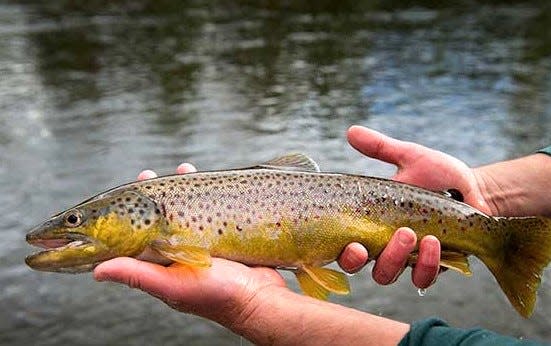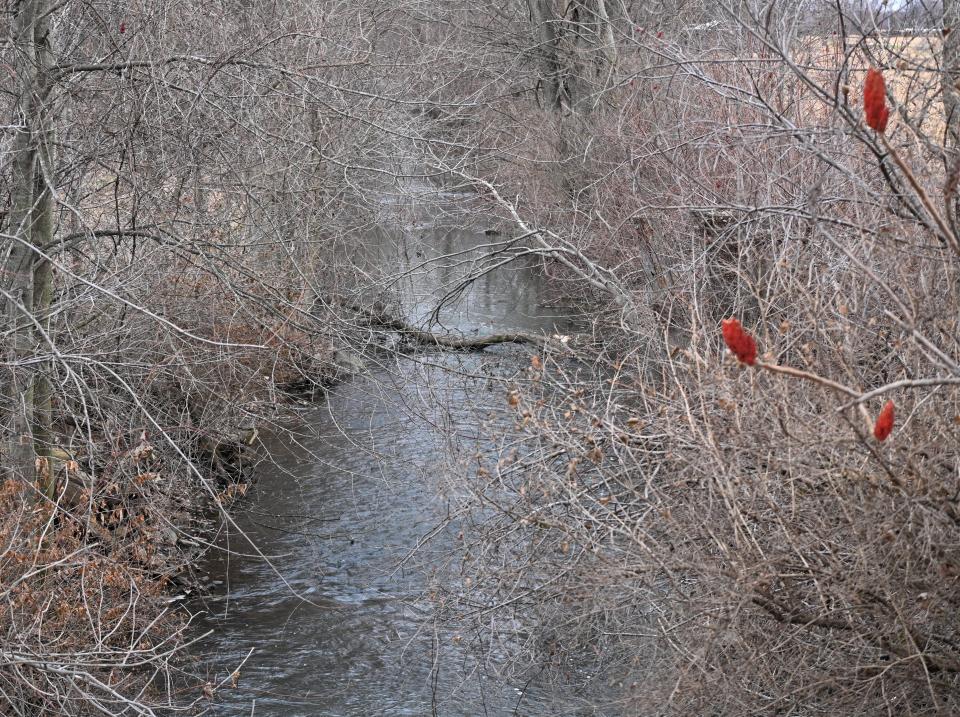DNR says only concern in Prairie River designation is brown trout survival
BRANCH COUNTY — Representatives from Michigan’s Department of Natural Resources made it clear that plans to change the designation of the upper region of the Prairie River basin were to protect the brown trout population, not to look at the economic interest of surrounding landowners and the county.
Farmers and county officials claim the change in the river designation from warm stream to cold stream will have a major impact on that area of the river from Kinderhook west to the county line near Burr Oak. The Prairie River drainage area in Branch County is 66 square miles.

At the final 2022 Branch County Commission meeting on Dec. 22, Jay Wesley of the DNR and Jim Milne of the Michigan Department of Environment, Great Lakes, and Energy addressed commissioners by Zoom on the proposed change.
DNR director Dan Eichinger will make the decision Jan. 12 after both sides presented their arguments before water use boards. The final request went to the Michigan Natural Resource Commission Dec. 8.
Farmers in the basin have installed irrigation on 55,000 acres to grow high-revenue specialty crops such as seed corn and potatoes.
MoreState wants to impose water limits on Prairie River basin to protect fish populations
Jim Milne, EGLE water use assessment unit supervisor, told commissioners, “EGLE has not studied the economic impact on whether we are able to authorize any new or increased large quantity withdrawals.”
Milne also said withdrawals could be limited if the state can “either by the water withdrawal assessment tool or by site-specific review by EGLE, ... through a preponderance of the evidence, meaning by over 50%, it is likely, it would cause an adverse resource impact” if not changed.
Officials used a chart to show the river’s summer flow at 8,528 gallons per minute. The chart indicated that, for a warm river, there needed to be 51 gpm more for brown trout, while if designated as a cold river, flow needed to be 1,845 gpm more. Officials were vague if the information was actual measurement or model-based.
Michigan State University Extension irrigation educator Lyndon Kelley is among those who dispute the use of the water assessment tool used by DNR and EGLE. He said water records kept by users are more accurate and reliable.
The U.S. Geological Survey kept a continuous satellite water flow gauge at Orland Road on the river until 2019, when it was removed. The only current gauge in Branch County is now at U.S. 12 below a dam on the river.

Wesley said DNR has the authority to change a stream designation to promote fishing and conservation.
“It's not something that's changed very often at all," he said. "In fact, this is the first one that we've recommended since the statute has been in place.”
Aaron Rice, a spokesperson for the group opposed to the change, said Prairie River is the test case for more river changes around Michigan.
Brown trout were an invasive species introduced into Michigan in the 1880s, where it now thrives.
First placed in the Prairie River in the 1980s, DNR stopped stocking brown trout in 1992 in Branch County because the cost was not producing the desired result to turn it into a trout stream.
Wesley said a survey in 2010 found over 212 (brown trout), ranging from 2-22 inches, indicating a stable sustainable fishery. Data was collected from 2012 until 2015, with the temperature monitored at 13 different locations throughout the year.

If the stream gets too low in the summer months, it warms up and kills off the brown trout. Classifying the river as cold limits the amount of water that can be taken from the river basin to keep flows high and the fish safe.
Besides the loss of land value, if irrigation is limited, Branch County Road Commission chair Bob Mayer warned that the change in designations would cost the road commission and townships for bridges along the 54 miles of waterway.
Culverts are now used to cross the river on most roads. Because they often are a barrier to fish, when those need to be replaced, bridges must be used to allow for fish to move freely along the river. The cost of replacing culverts with bridges is three times the cost, Mayer explained.
The DNR director is expected to approve the redesignation.
SubscribeFollow the Prairie River story. Subscribe to the Daily Reporter
A coalition of interested parties called Prairie Water Group formed to stop the redesignation of the river will then need to determine what action to take, possibly challenging DNR in court.
The group had asked Branch County Commissioners to oppose the DNR action. Commissioners took no stance.
— Contact Don Reid: dReid@Gannett.com. Follow him on Twitter: @DReidTDR.
This article originally appeared on Coldwater Daily Reporter: DNR said Prairie River designation change needed for Brown trout protection

